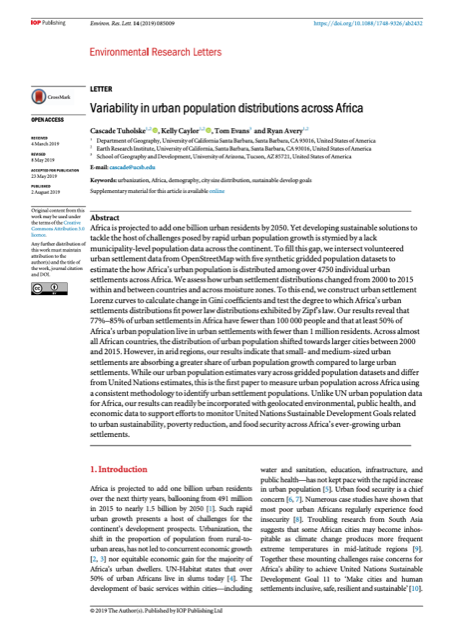Variability in urban population distributions across Africas

Abstract: Africa is projected to add one billion urban residents by 2050. Yet developing sustainable solutions to tackle the host of challenges posed by rapid urban population growth is stymied by a lack municipality-level population data across the continent. To fill this gap, we intersect volunteered urban settlement data from OpenStreetMap with five synthetic gridded population datasets to estimate the how Africa’s urban population is distributed among over 4750 individual urban settlements across Africa. We assess how urban settlement distributions changed from 2000 to 2015 within and between countries and across moisture zones. To this end, we construct urban settlement Lorenz curves to calculate change in Gini coefficients and test the degree to which Africa’s urban settlements distributions fit power law distributions exhibited by Zipf’s law. Our results reveal that 77%–85% of urban settlements in Africa have fewer than 100 000 people and that at least 50% of Africa’s urban population live in urban settlements with fewer than 1 million residents. Across almost all African countries, the distribution of urban population shifted towards larger cities between 2000 and 2015. However, in arid regions, our results indicate that small- and medium-sized urban settlements are absorbing a greater share of urban population growth compared to large urban settlements. While our urban population estimates vary across gridded population datasets and differ from United Nations estimates, this is the first paper to measure urban population across Africa using a consistent methodology to identify urban settlement populations. Unlike UN urban population data for Africa, our results can readily be incorporated with geolocated environmental, public health, and economic data to support efforts to monitor United Nations Sustainable Development Goals related to urban sustainability, poverty reduction, and food security across Africa’s ever-growing urban settlements.
